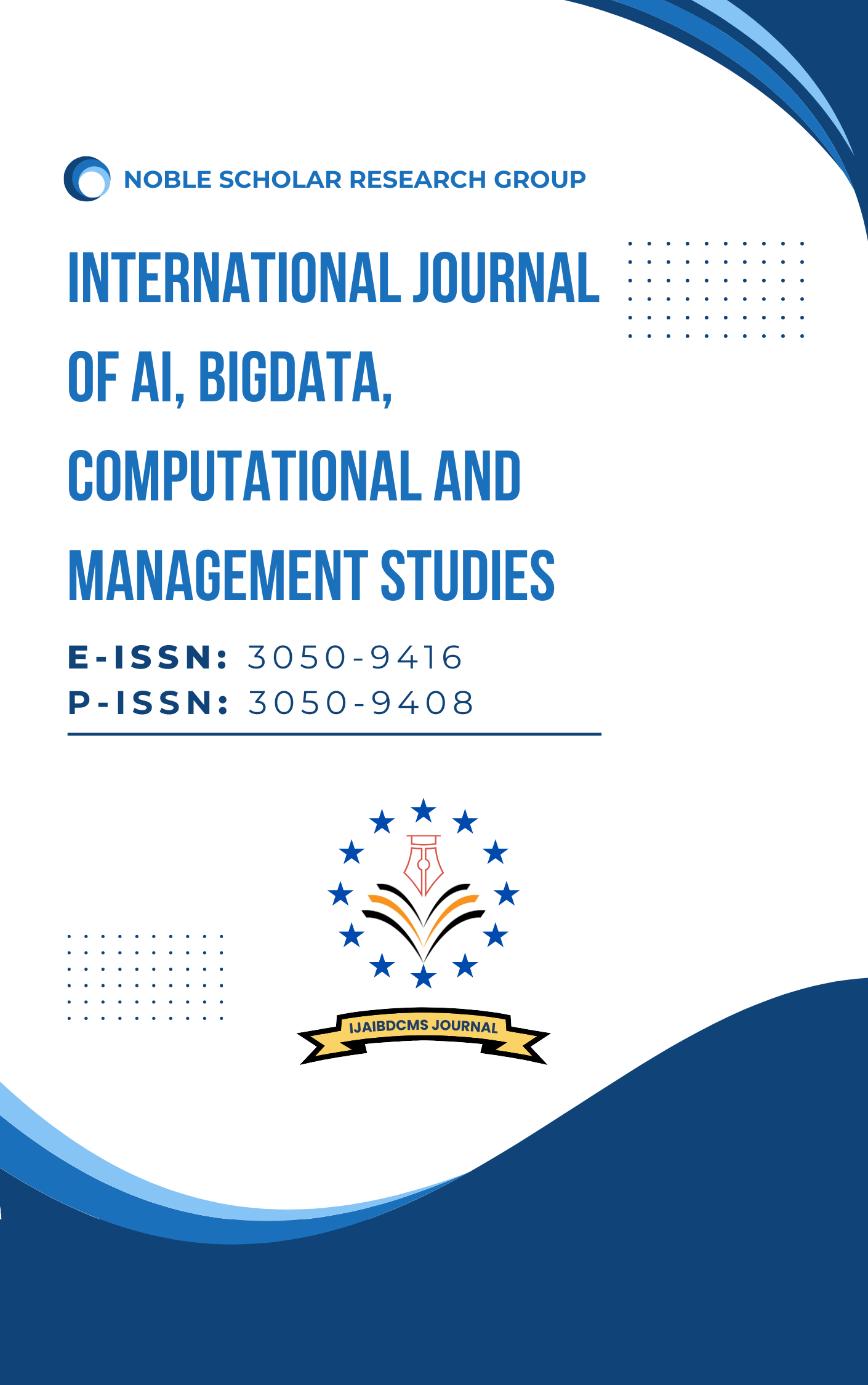Homomorphic Encryption: Transforming Cloud Security with Computation on Encrypted Data
DOI:
https://doi.org/10.63282/3050-9416.IJAIBDCMS-V3I4P102Keywords:
Homomorphic Encryption, Fully Homomorphic Encryption, Cloud Security, Privacy-Preserving Computation, Encrypted Data Processing, Bootstrapping, Cryptographic Techniques, Key Management, Computational Overhead, Secure Cloud ComputingAbstract
Homomorphic encryption (HE) is a groundbreaking cryptographic technique that allows computations to be performed directly on encrypted data without the need for decryption. This capability has profound implications for cloud security, enabling secure and private data processing in untrusted environments. This paper provides a comprehensive overview of homomorphic encryption, its theoretical foundations, practical applications, and the challenges and future directions in the field. We explore the evolution of homomorphic encryption, from its theoretical inception to the current stateof-the-art implementations. We also discuss the impact of HE on cloud security, including its role in data privacy, secure computation, and compliance with regulatory standards. Additionally, we present a detailed algorithm for a specific homomorphic encryption scheme and analyze its performance and security properties. Finally, we discuss the limitations and future research directions to advance the field of homomorphic encryption
References
1. Armknecht, F., Boyd, C., Gjøsteen, K., Jäschke, A., & Reuter, C. (2015). A guide to fully homomorphic encryption. Cryptology ePrint Archive. https://eprint.iacr.org/2015/1192
2. Brakerski, Z., & Vaikuntanathan, V. (2014). Efficient fully homomorphic encryption from (standard) LWE. SIAM Journal on Computing, 43(2), 831–871. https://doi.org/10.1137/120868669
3. Chillotti, I., Gama, N., Georgieva, M., & Izabachène, M. (2016). Faster fully homomorphic encryption: Bootstrapping in less than 0.1 seconds. Advances in Cryptology – ASIACRYPT 2016, 3–33. https://doi.org/10.1007/978-3-662-53887-6_1
4. Gentry, C. (2009). Fully homomorphic encryption using ideal lattices. Proceedings of the 41st Annual ACM Symposium on Theory of Computing, 169–178. https://doi.org/10.1145/1536414.1536440
5. Gentry, C., Halevi, S., & Smart, N. P. (2012). Homomorphic evaluation of the AES circuit. Advances in Cryptology – CRYPTO 2012, 850–867. https://doi.org/10.1007/978-3-642-32009-5_49
6. Halevi, S., & Shoup, V. (2014). Algorithms in HElib. Advances in Cryptology – CRYPTO 2014, 554–571. https://doi.org/10.1007/978-3-662-44381-1_31
7. Kim, M., Song, Y., Kim, S., & Cheon, J. H. (2018). Secure logistic regression based on homomorphic encryption: Design and evaluation. Journal of Biomedical Informatics, 86, 68–79. https://doi.org/10.1016/j.jbi.2018.08.012
8. Microsoft Research. (n.d.). Microsoft SEAL: Fast and easy-to-use homomorphic encryption. https://www.microsoft.com/en-us/research/project/microsoft-seal/
9. Munjal, K., & Bhatia, R. (2022). A systematic review of homomorphic encryption and its contributions in healthcare industry. Complex & Intelligent Systems, 8, 3801–3822. https://doi.org/10.1007/s40747-022-00712-0
10. Naehrig, M., Lauter, K., & Vaikuntanathan, V. (2011). Can homomorphic encryption be practical? Proceedings of the 3rd ACM Workshop on Cloud Computing Security Workshop, 113–124. https://doi.org/10.1145/2046660.2046682
11. Red Hat Research. (n.d.). Preserving privacy in the cloud: Speeding up homomorphic encryption with FPGAs. https://research.redhat.com/blog/article/privacy-in-the-cloud-speeding-up-homomorphic-encryption-with-fpgas/
12. Sahai, A., & Waters, B. (2014). How to use indistinguishability obfuscation: Deniable encryption, and more. Proceedings of the 46th Annual ACM Symposium on Theory of Computing, 475–484. https://doi.org/10.1145/2591796.2591825
13. Shai, H., & Shoup, V. (2020). Bootstrapping for HElib. Journal of Cryptology, 33, 255–266. https://doi.org/10.1007/s00145-019-09316-0
14. Van Dijk, M., Gentry, C., Halevi, S., & Vaikuntanathan, V. (2010). Fully homomorphic encryption over the integers. Advances in Cryptology – EUROCRYPT 2010, 24–43. https://doi.org/10.1007/978-3-642-13190-5_2
15. Wang, H., & Hu, M. (2015). A survey on homomorphic encryption schemes and their applications. Proceedings of the 2015 International Conference on Advanced Computer Science and Applications, 1–5. https://doi.org/10.1109/ICACSA.2015.7479221
16. Zama. (n.d.). Concrete: Open-source homomorphic encryption library. https://zama.ai/concrete/



